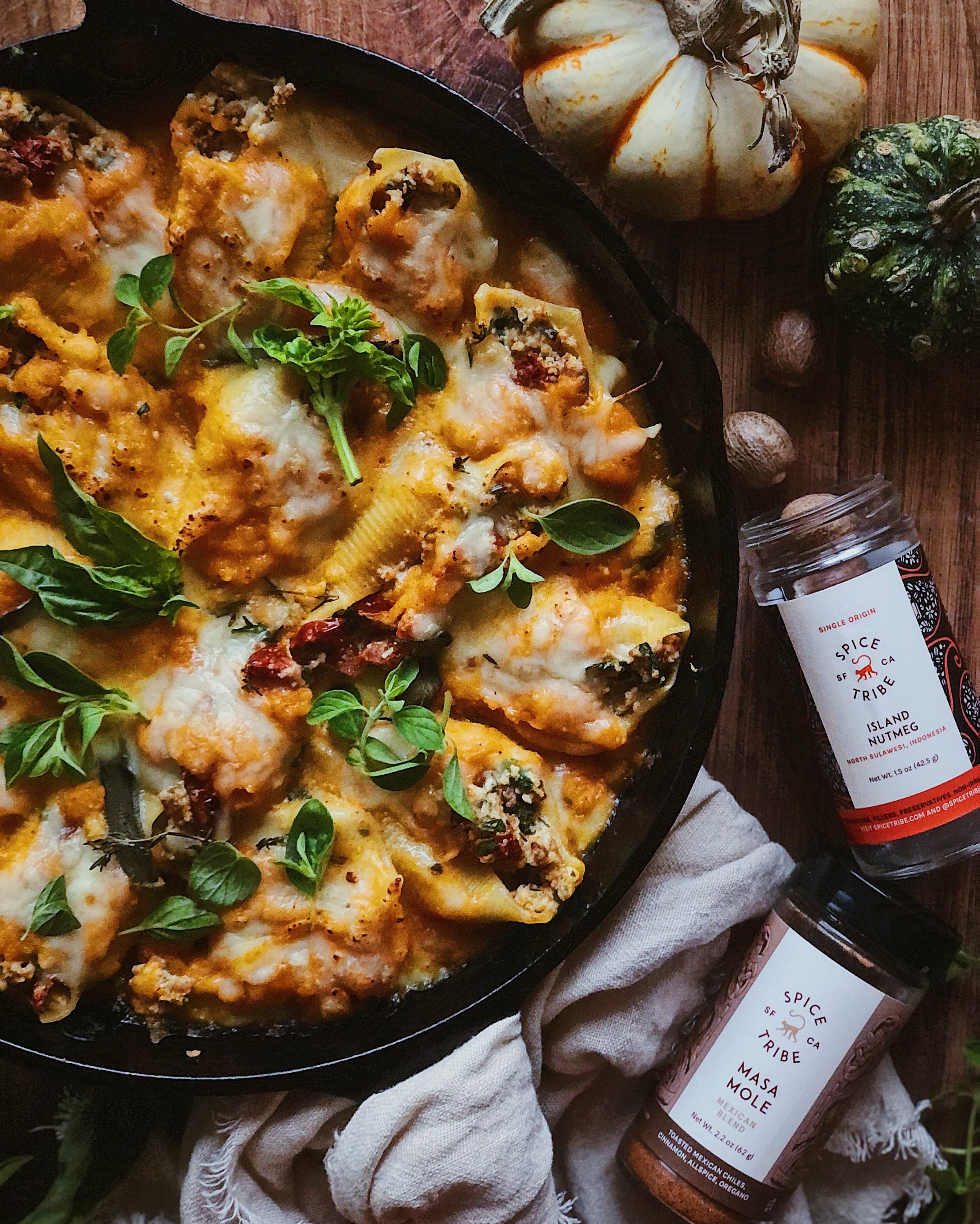To make the butternut squash sauce, preheat the oven to 425°F. Cut butternut squash into chunks, about 10–12 pieces. Add squash pieces to a baking dish and add olive oil, salt, and pepper. Toss until the pieces are evenly coated. Bake for 30 minutes, flip over squash pieces, and bake for an additional 15 minutes or until very tender. Allow to cool slightly. (Note: Squash can be roasted the night before.)
Transfer roasted butternut squash and any oil from the baking dish into a blender. Add nutmeg and 3/4 cup chicken broth and blend on high until smooth. Sauce should be similar in thickness to marinara sauce; if needed, add more broth and blend again. Set sauce aside.
To make the filling, heat oil in a nonstick skillet on medium heat, then add onions. Start sautéing and turn heat down to low once onions start to brown. Continue to allow the onions to caramelize, stirring occasionally, until golden brown, about 4 minutes. Add garlic and sauté for 1 minute, or until fragrant. Turn heat back up to medium and add turkey, salt, pepper, Spice Tribe Masa Mole blend, and brown sugar. Sauté mixture until turkey is just cooked through, about 5 minutes. Transfer to a large mixing bowl and allow to cool slightly.
To the cooled turkey mixture, add ricotta cheese, chopped herbs, sundried tomatoes, and 1 cup mozzarella. Mix together, pour beaten egg on top, and mix thoroughly.
Boil pasta shells according to package instructions for stuffed shells.
Set oven to 385°F.
Add 1 1/2 cups of butternut squash sauce in an even layer to the bottom of a 10-inch cast iron skillet.
Scoop filling into pasta shells. (Be generous; you should be able to fit 1 to 1 1/2 heaping tablespoons in each.) Arrange filled pasta shells in the skillet. Top with remaining sauce, a thin layer of additional mozzarella, a few sage leaves, and a bit of thyme.
Spray a sheet of foil with cooking spray on one side to prevent the cheese from sticking and cover the skillet. Bake for 20 minutes, then remove the foil and bake for an additional 10 minutes, or until the sauce is bubbly and the cheese is melted and gooey. If desired, place under the broiler for 2–3 minutes to brown the top.
Garnish with fresh basil and oregano and enjoy.







































































